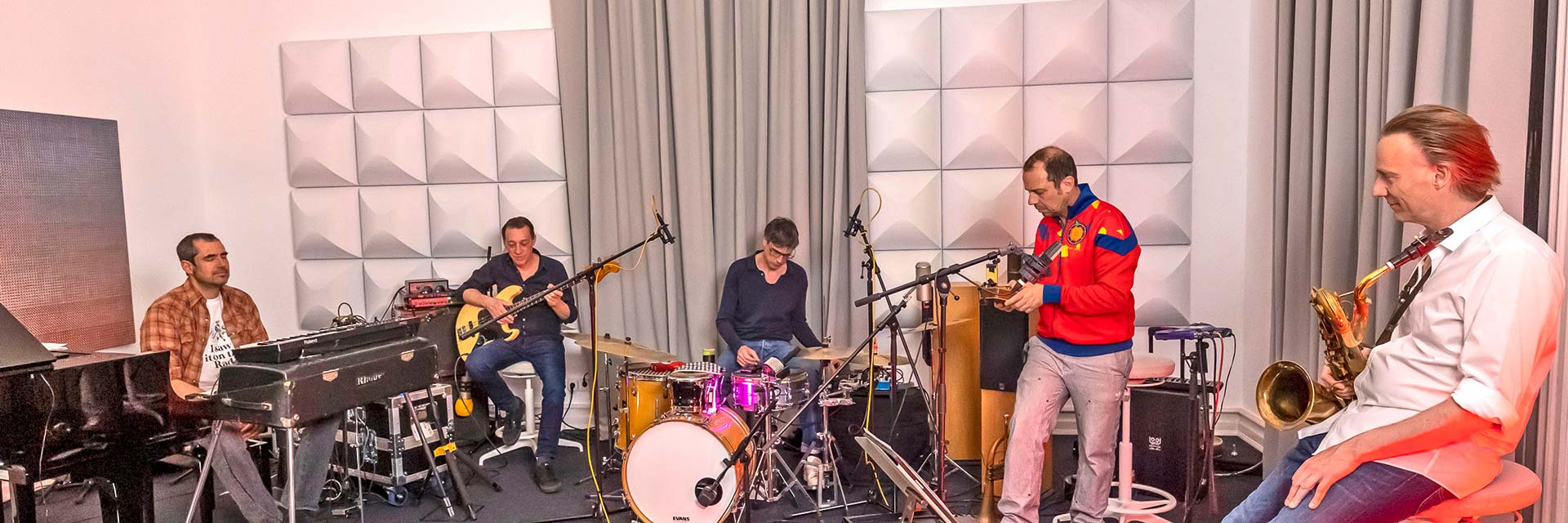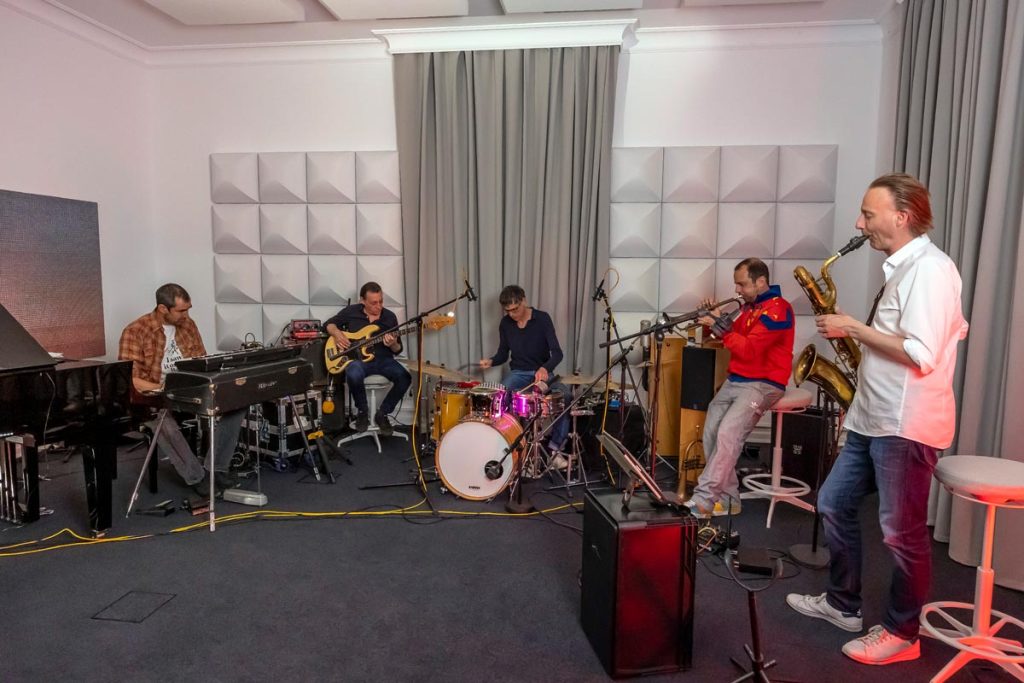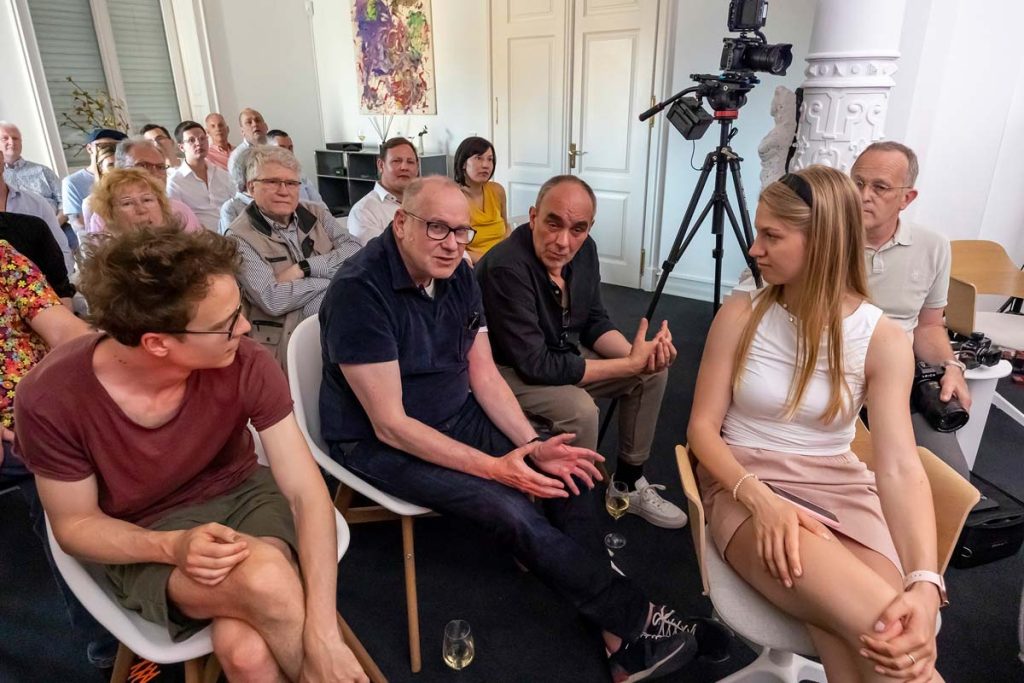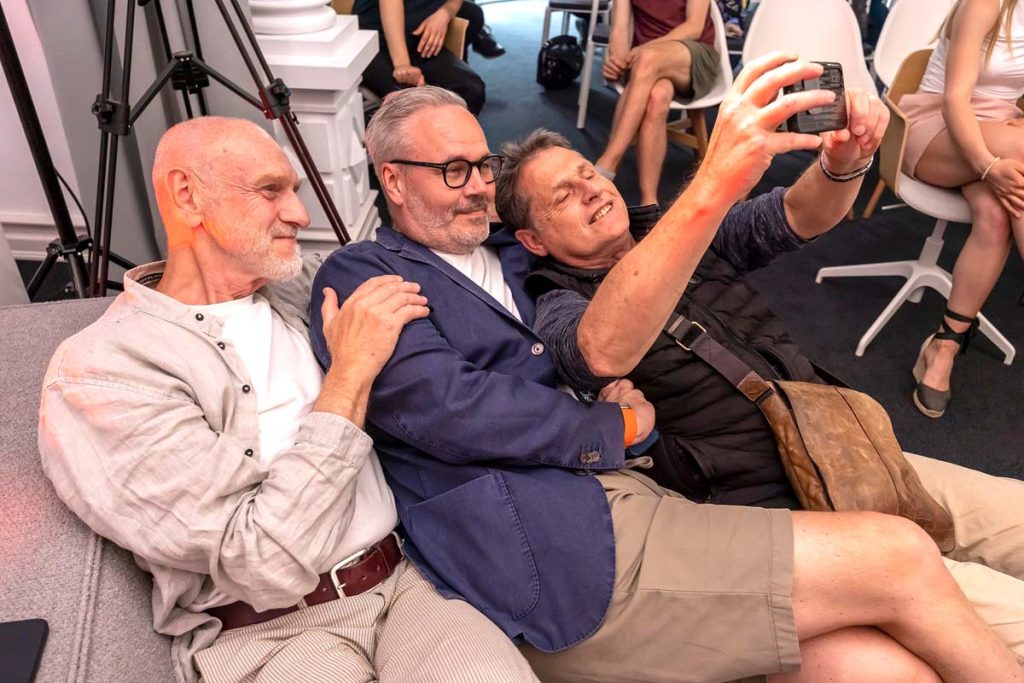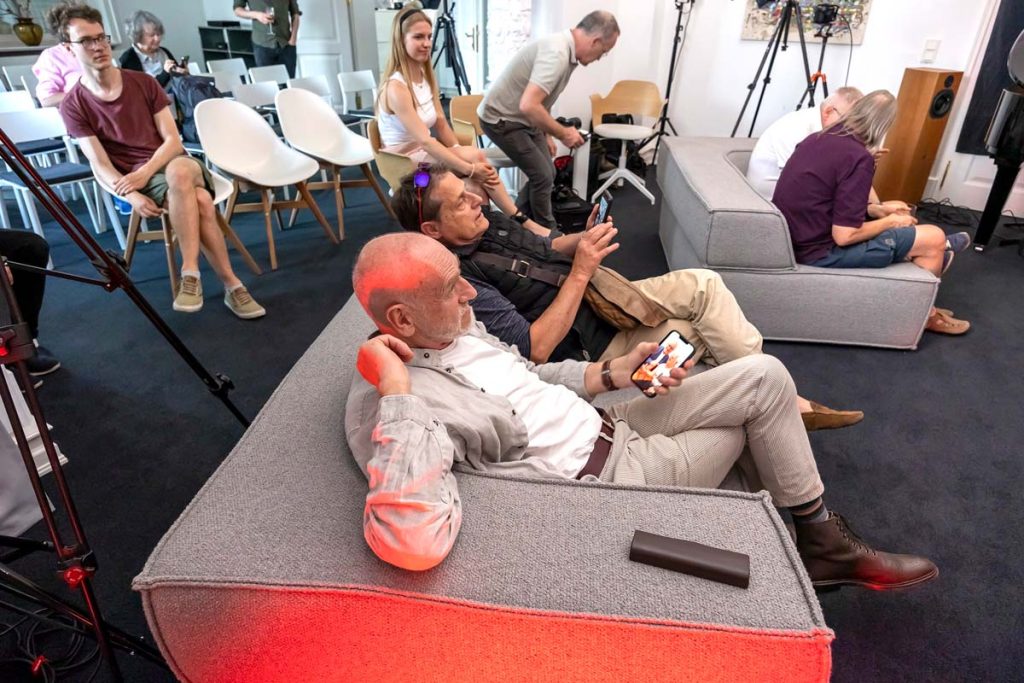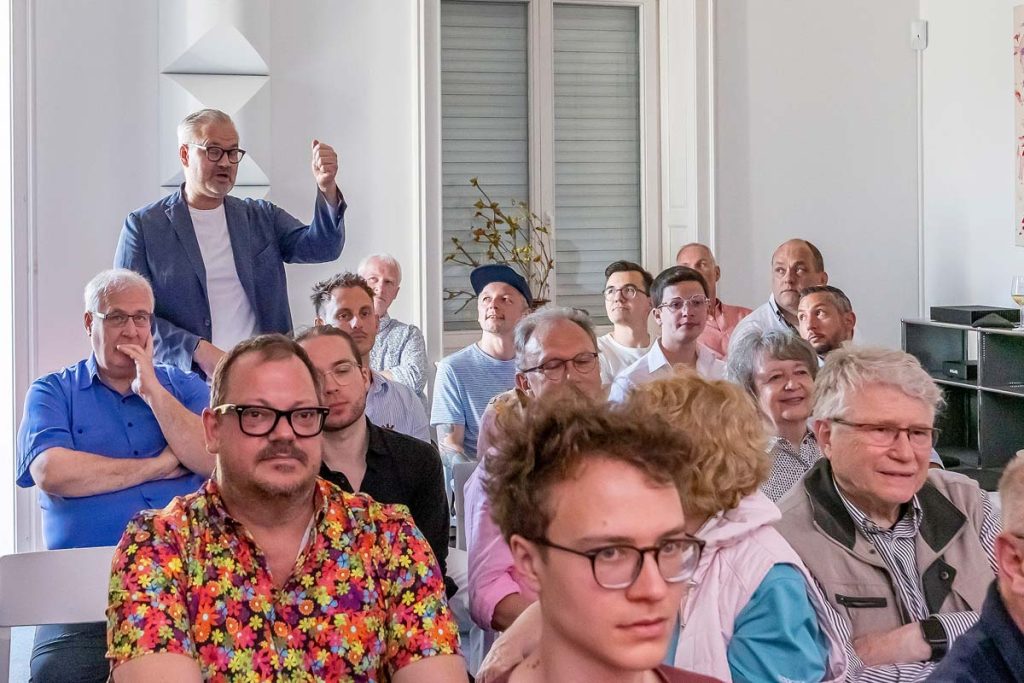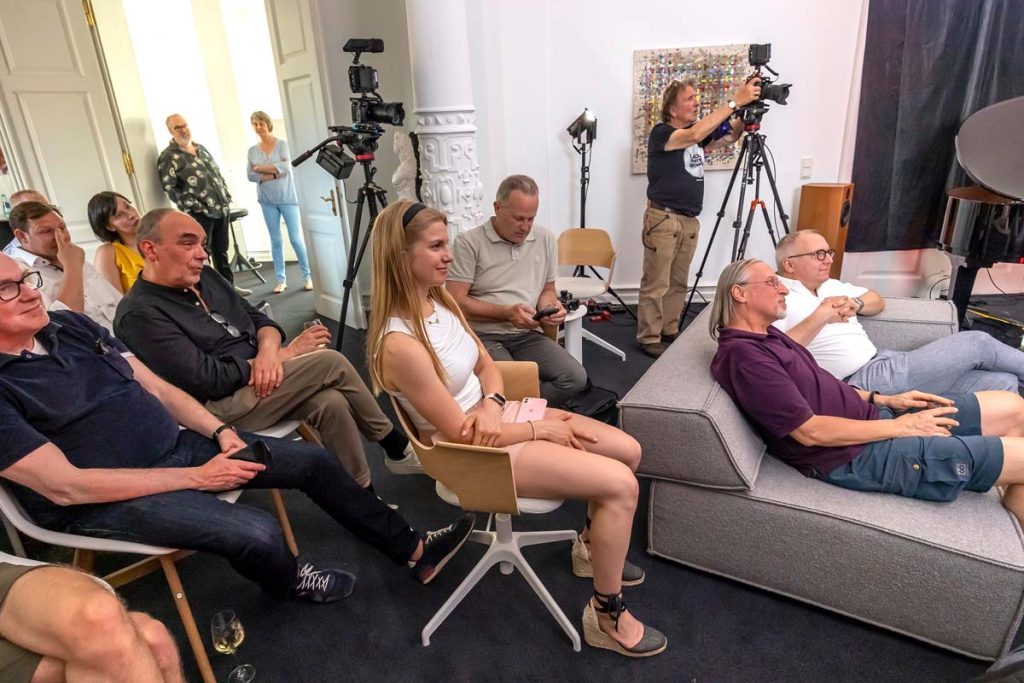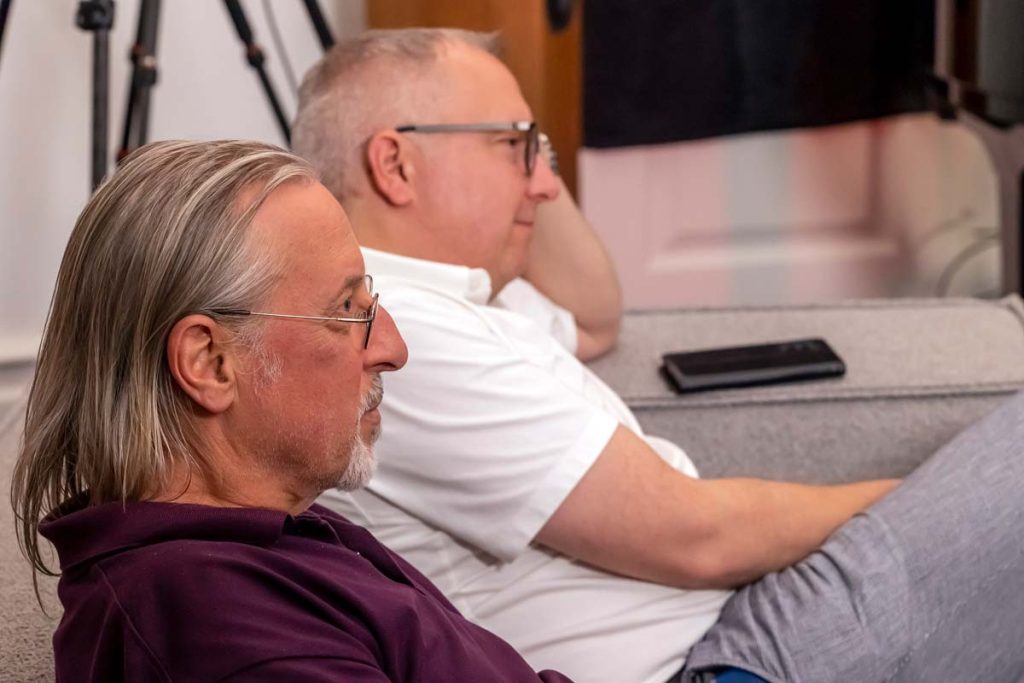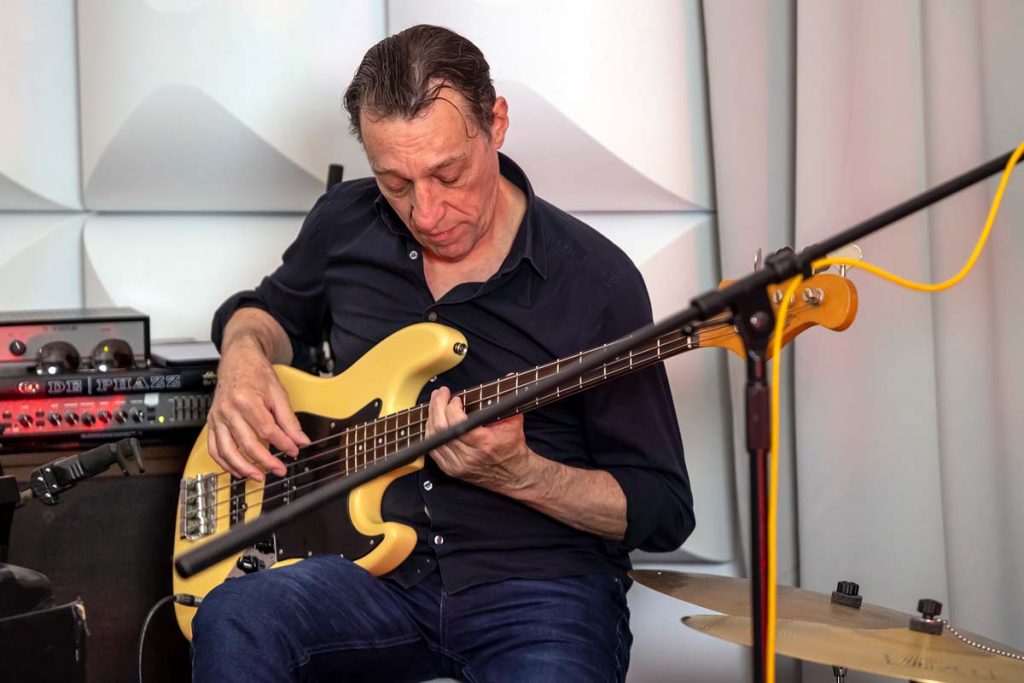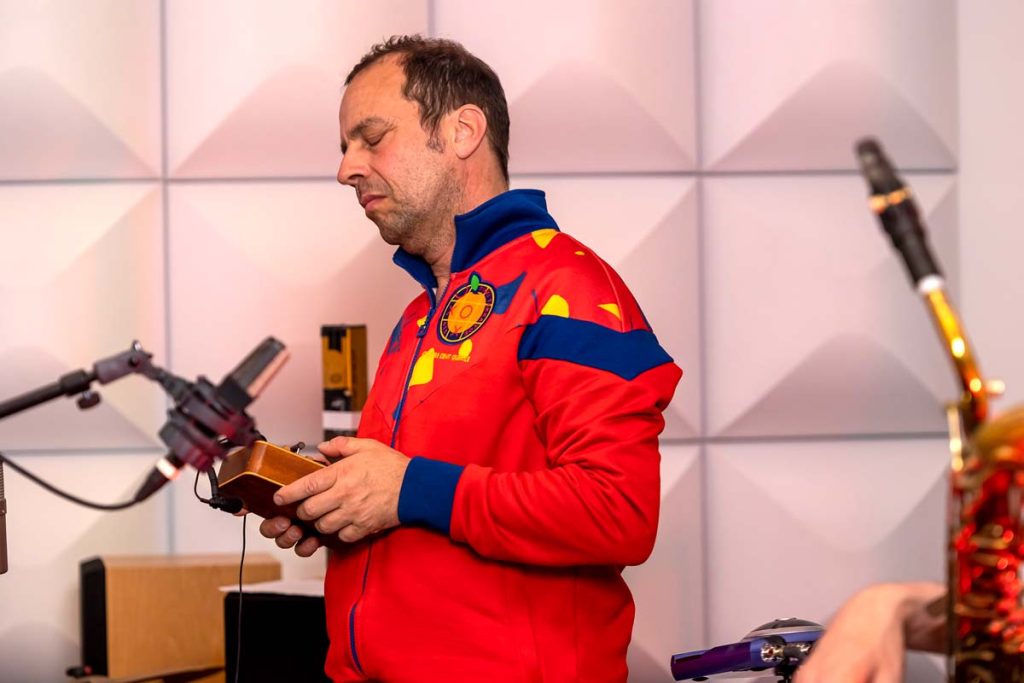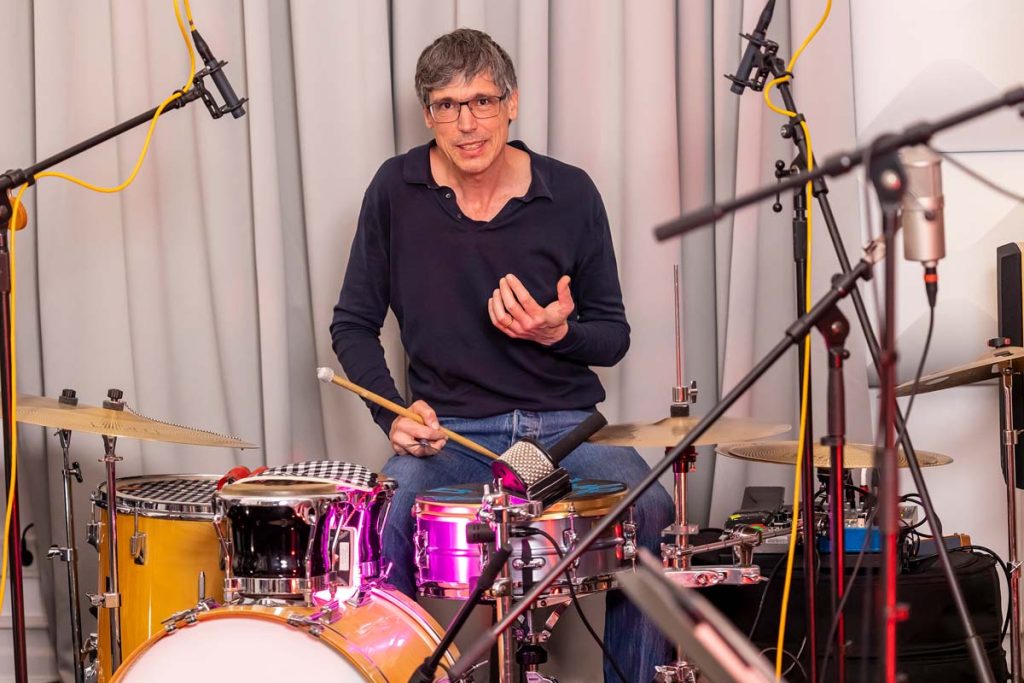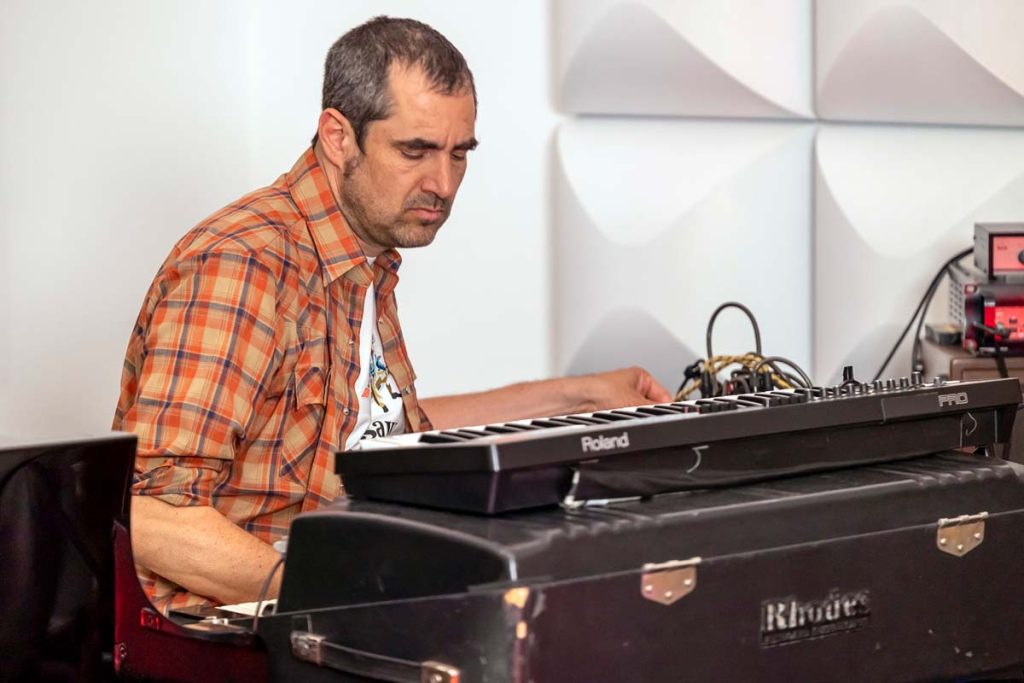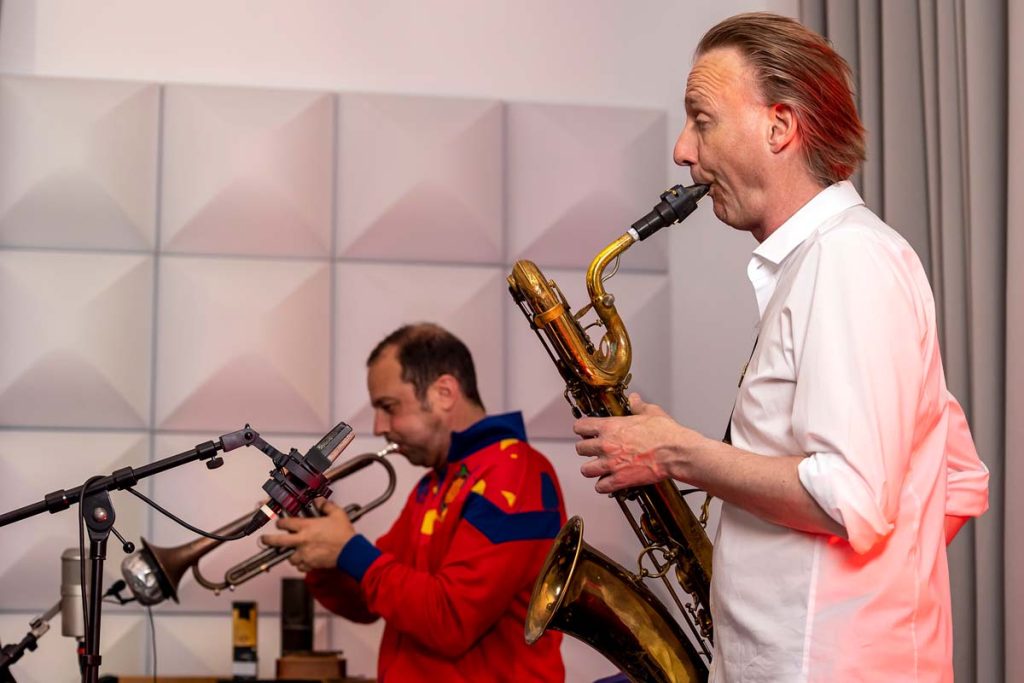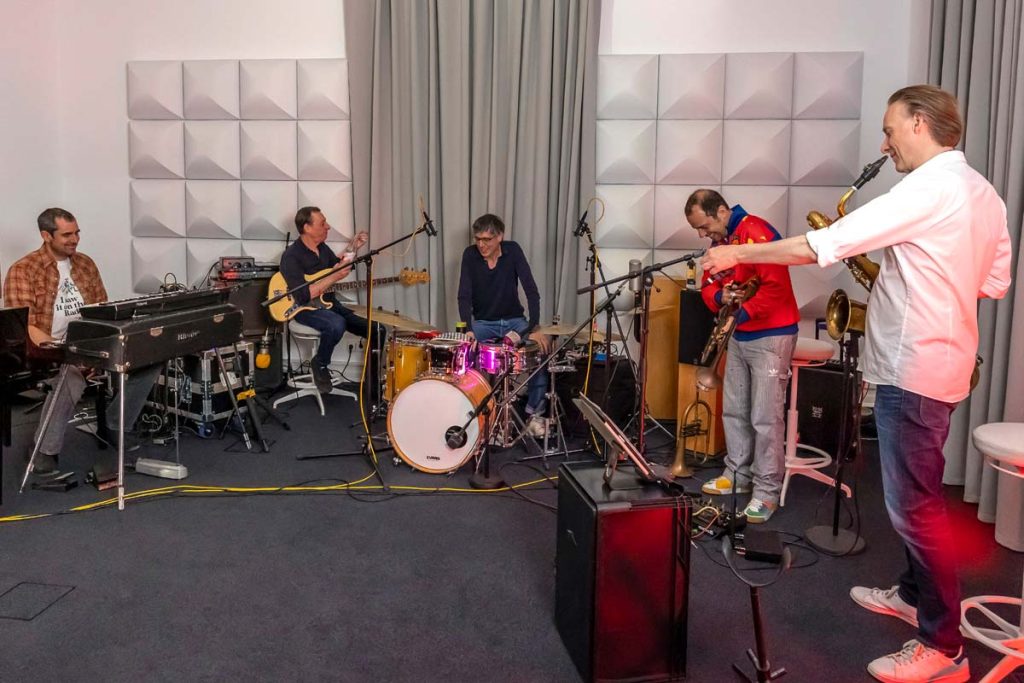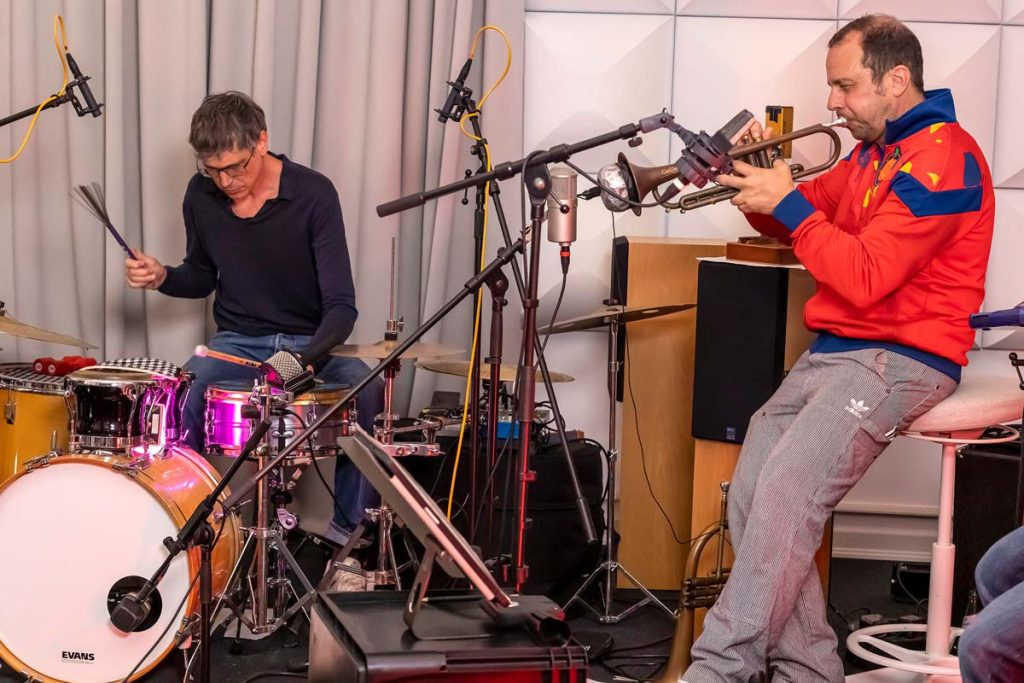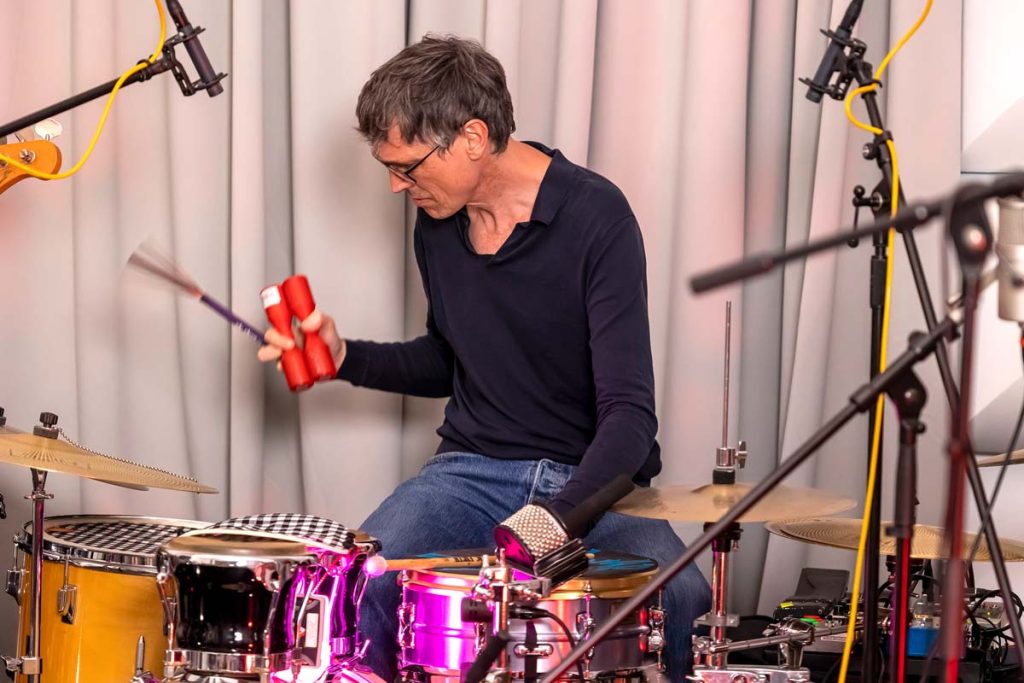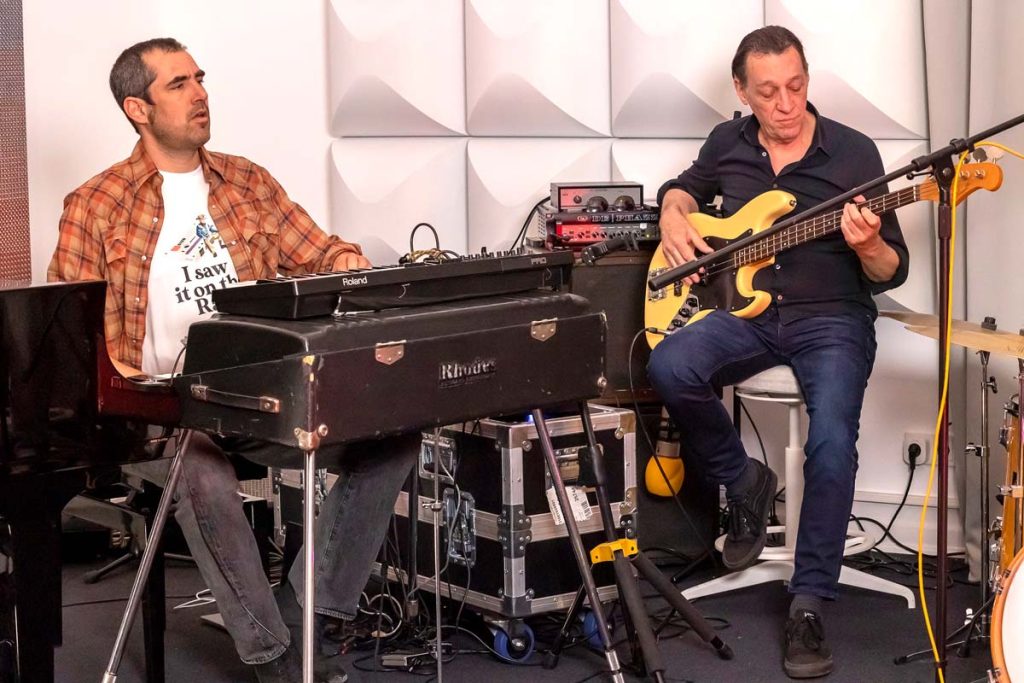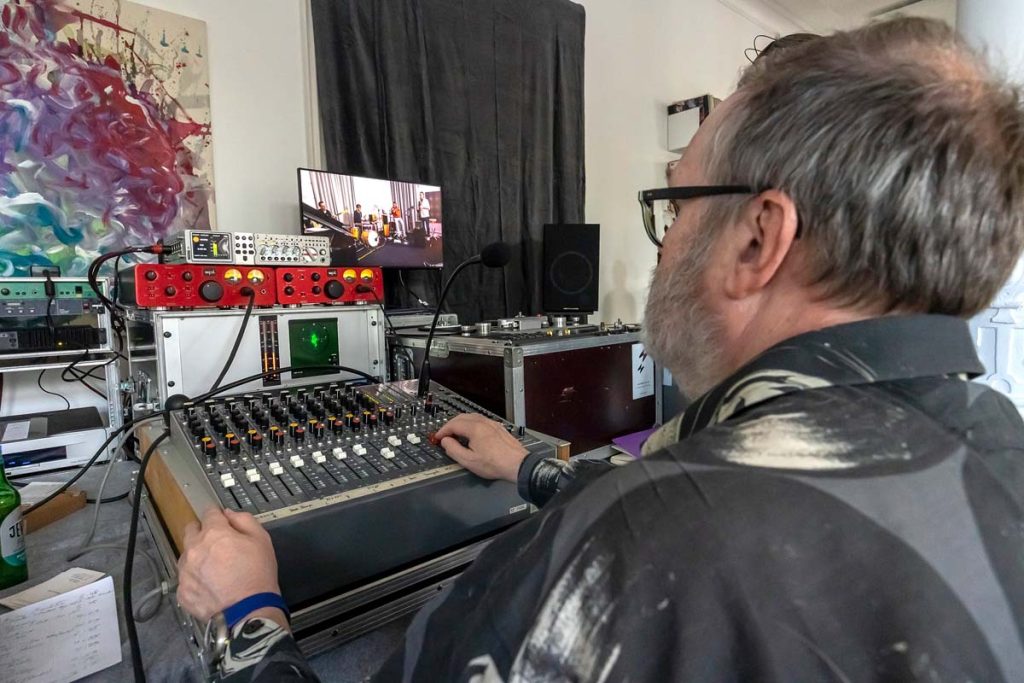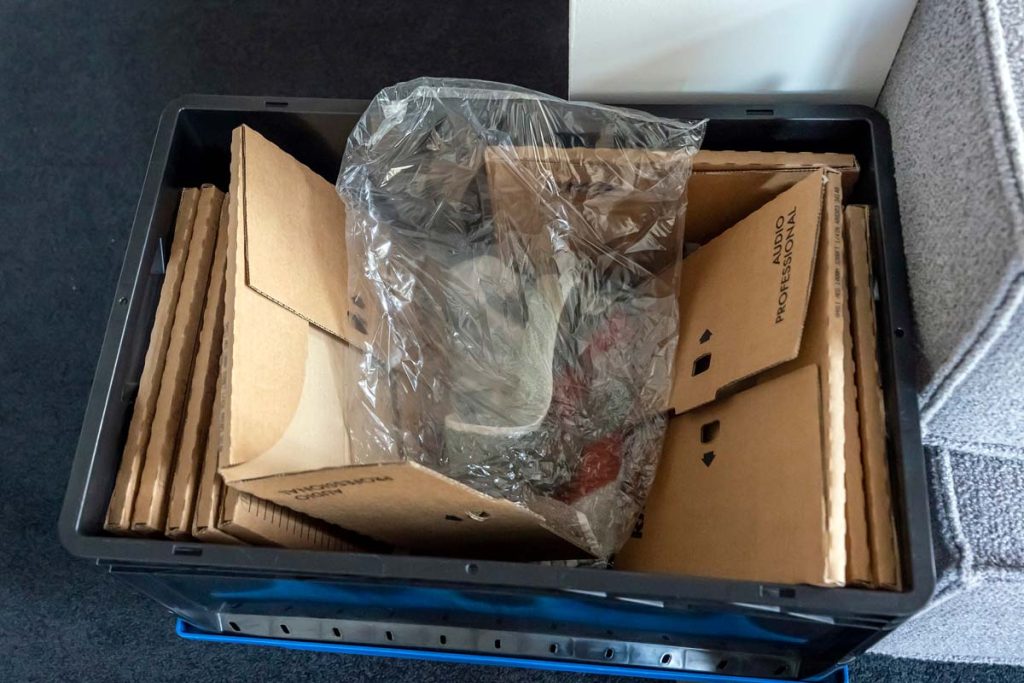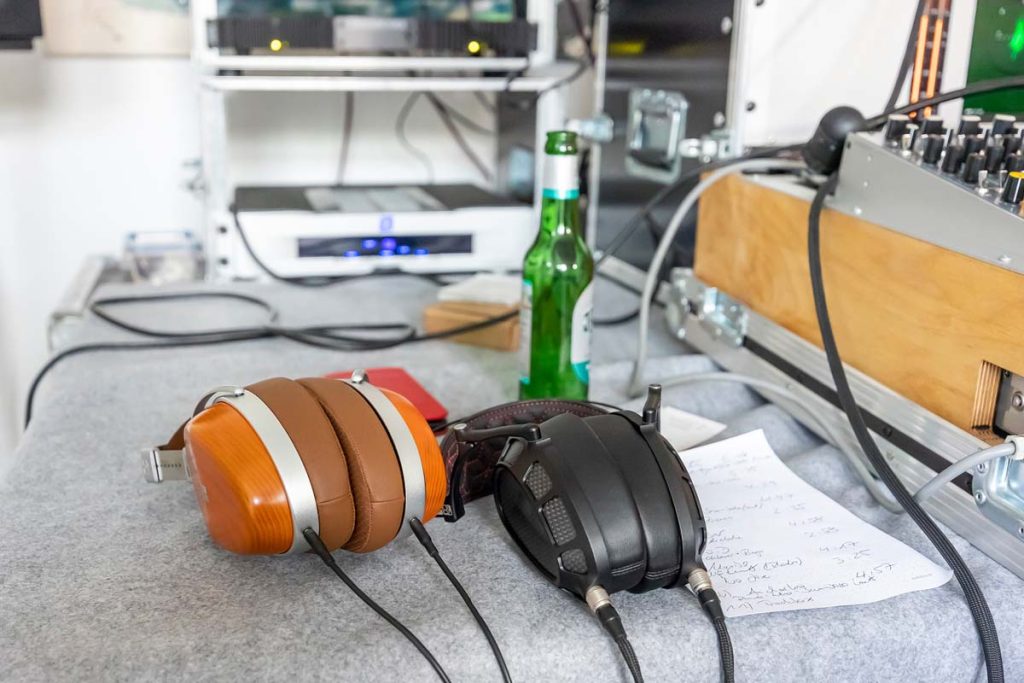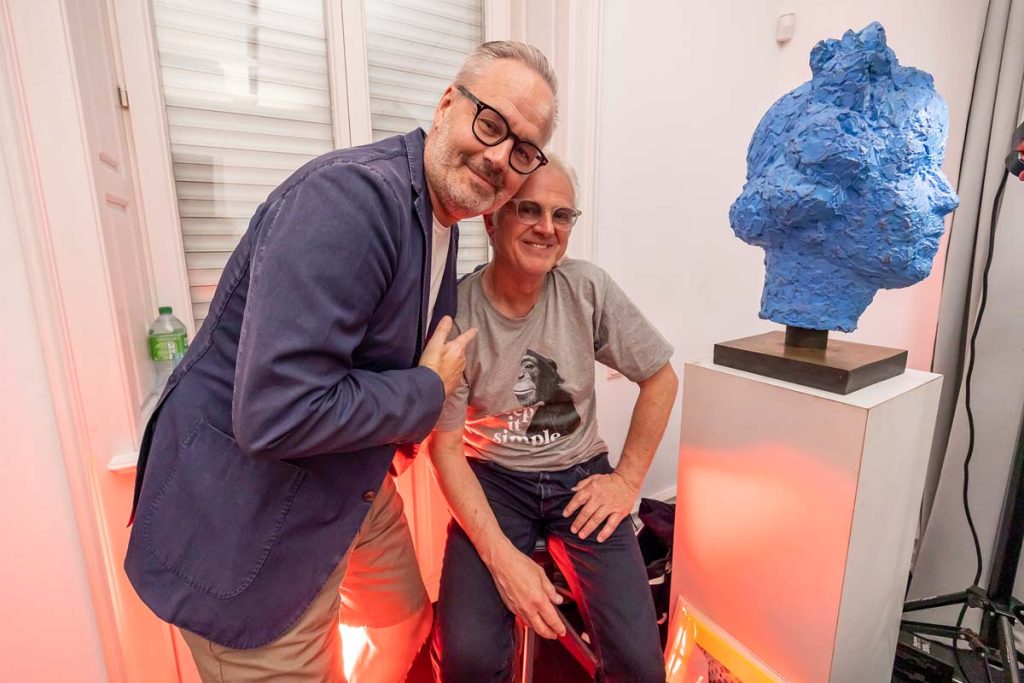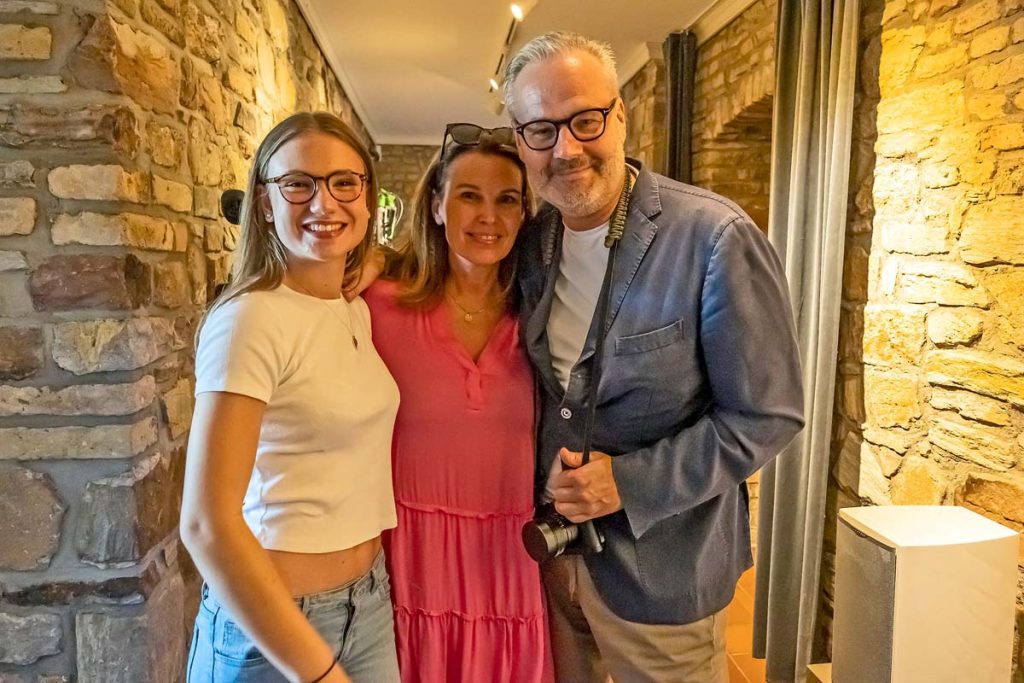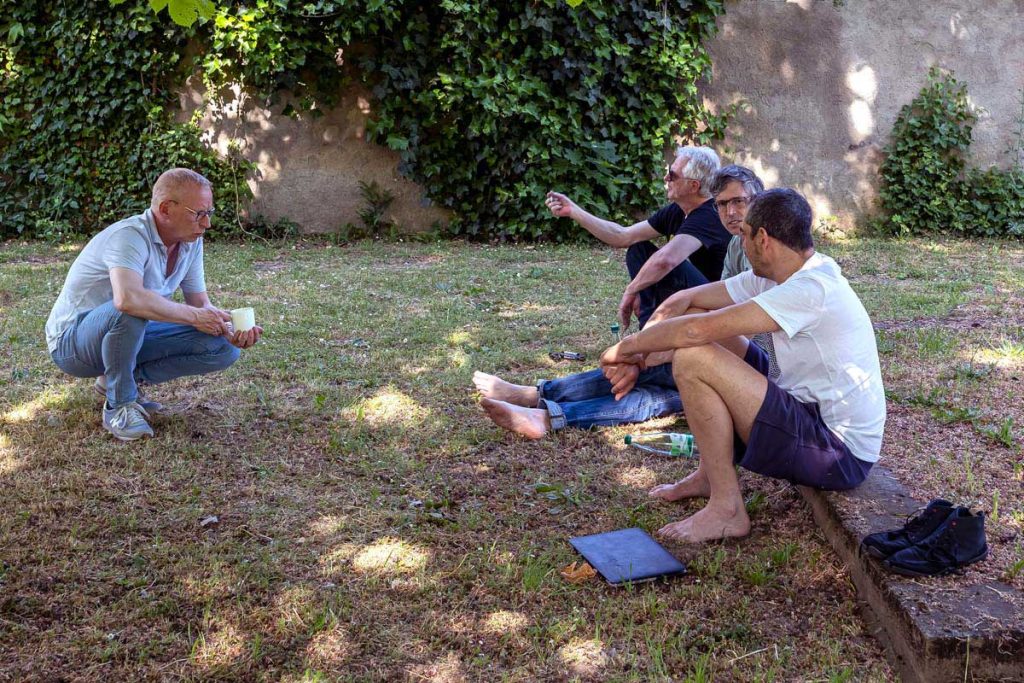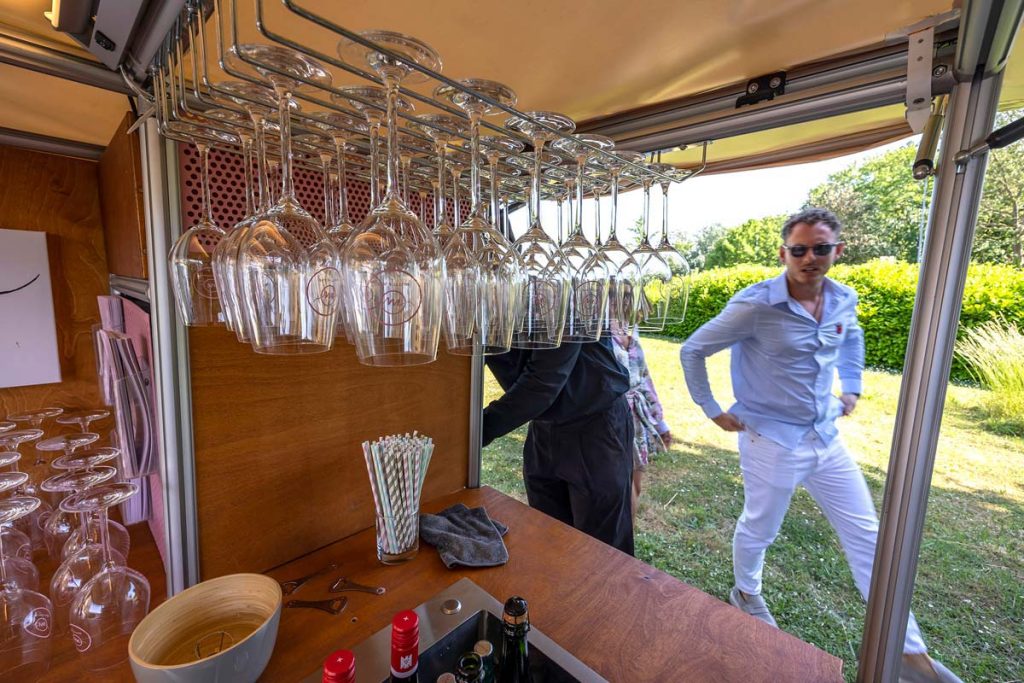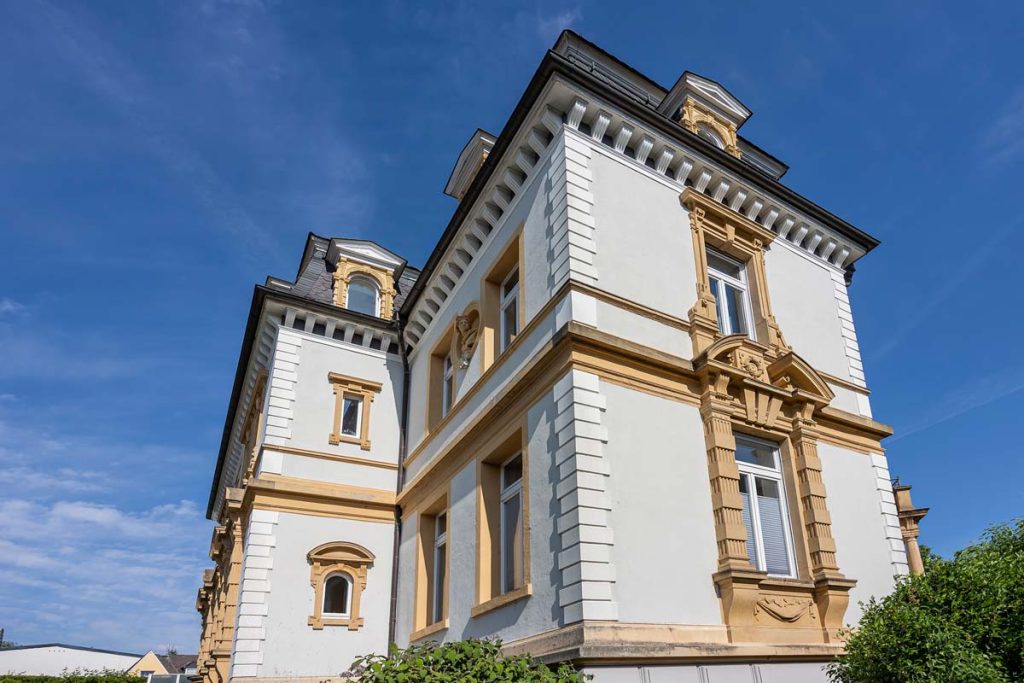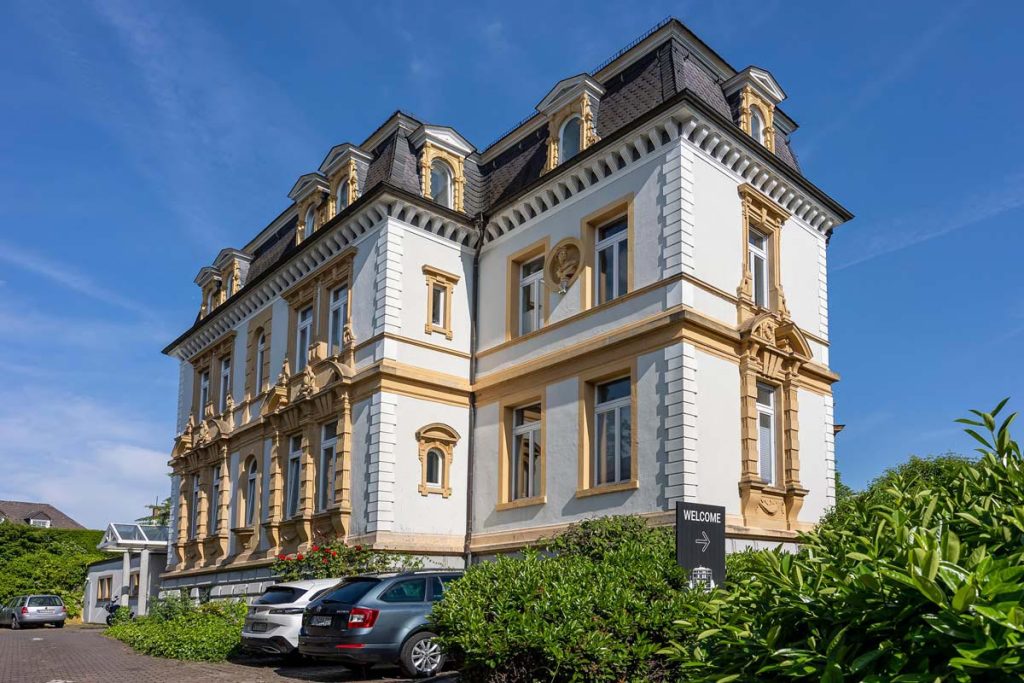How the ATR – Audio Trade Villa in Eltville am Rhein becomes a recording studio.
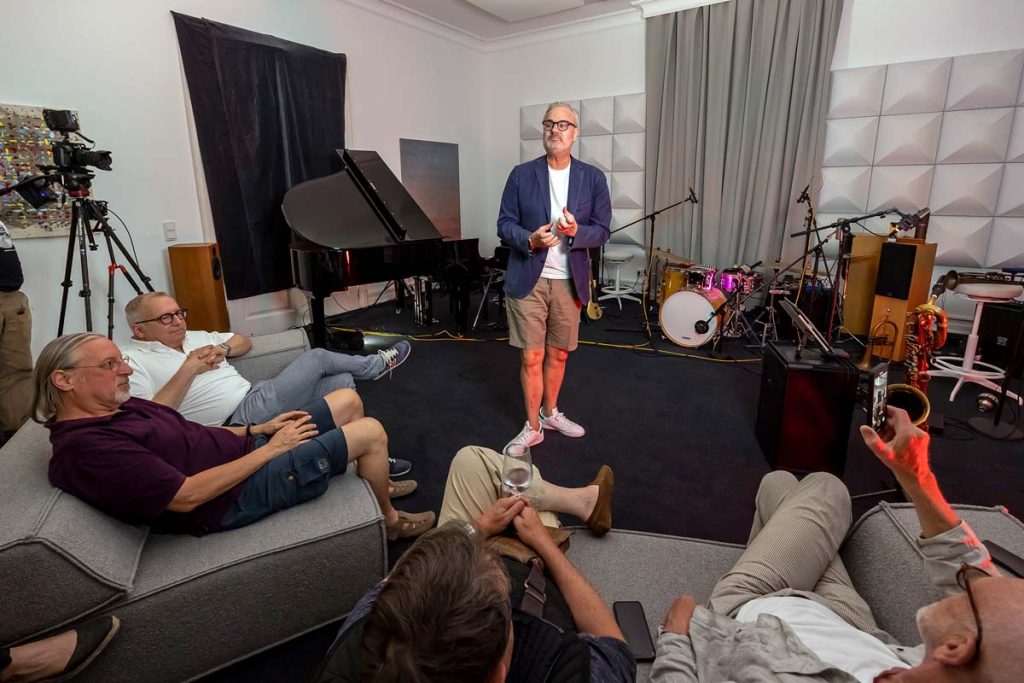
ATR mastermind Markolf Heimann calls it “an experiment”: For a few hours, the ATR Villa in Eltville became a recording studio, the scene of a live LP production. The protagonists: De-Phazz. Lounge jazz experts from Heidelberg, who topped the German pop charts for weeks with “The Mambo Craze”. At the controls: the “Sommelier du Son” alias Dirk Sommer. The goal: the release of a purely analog-produced De-Phazz LP in the fall of 2023.
“Is the tape running?” asks drummer Oli Rubow. A second later, Dirk Sommer confirms from the next room: “Tape is running. The recording session can begin, at the end of which eleven songs will be stored on tape. The tapes run at 38 centimeters per second, and for the strictly stereophonic recording Sommer relies on two Studer A810 tape machines hanging in parallel on the mixing console. Studio equipment in unbreakable safe-door quality from Switzerland. The consumer versions of these devices for eternity are sold under the Revox brand name, precision and longevity stand above all else for the radio-tested “tanks”.
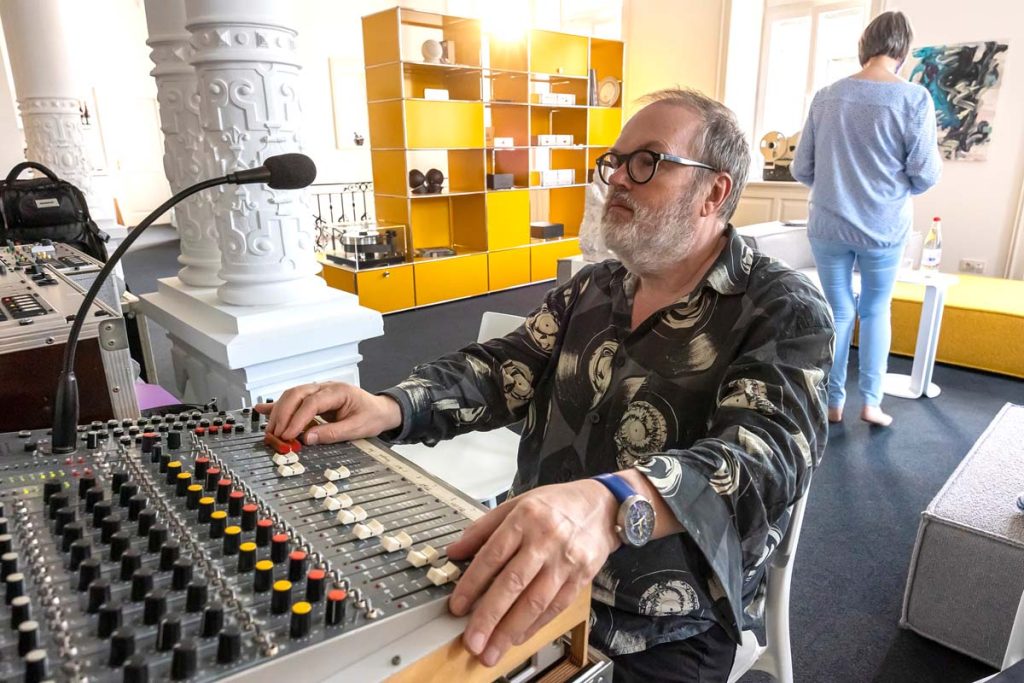
The distribution company ATR has had its own record productions in its portfolio for quite some time. Now the smart art nouveau mansion in the Hessian Eltville on the Rhine is to prove its qualities as a recording studio. The appearance of the Heidelberg cult jazz band De-Phazz is, if all goes well, only the prelude to a series of similar projects with which Markolf Heimann wants to increase the attractiveness of the topic of “stereophony” and raise awareness of the lifestyle aspect of high-quality music recording and reproduction.
Part of the concept is that this recording session takes place in front of invited guests. They are given precise rules of conduct in advance: The audience is to save the applause that is almost part of good manners at jazz concerts until the end of each musical number. The pieces themselves should be allowed to fade out before people start clapping. Applause is only given on a signal from trumpeter Joo Kraus – which works right away. With saxophonist Marcus Bartelt, Markus Lang on Fender Rhodes and Yamaha grand piano, and Bernd Windisch on electric bass, the band serves up very relaxed, very chill lounge jazz pieces with aspirations. Here, even deliberate dissonances are allowed to creep into the euphony, rhythmic and harmonic edges are allowed to appear.
If something does go wrong, the group and its sound engineer Dirk Sommer have no problem restarting the number in question and recording it again. In addition, the program was already played through once the day before. In the end, only what suits De-Phazz, the “Sommelier du Son” and producer and bandleader Pit Baumgartner 100 percent should make it onto the master tapes. There are no vocals on this production. In the past, high-profile jazz singers such as Pat Appleton, Barbara Lahr and Susan Horn had completed the De-Phazz line-up. What comes on the tapes at the Villa, on the other hand, is a pure instrumental set, supplemented only by some distorted-sounding voice samples, for which Joo Kraus is responsible. De-Phazz belongs to those bands that reinvent themselves again and again and therefore go on stage in changing line-ups.
On the other side, in the sun-drenched adjoining room, the highest concentration reigns. Birgit Hammer-Sommer and Dirk Sommer monitor the recording, meticulously watching out for unwanted background noise and other disturbing factors. Dirk Sommer, who as a hi-fi and music journalist has been dealing with the topic of “highest-quality music reproduction” for a long time, can now boast a large number of self-produced sound carriers with his “Sommelier du Son” project. Sommers’ clients include Dutch jazz guitarist Hans Theessink, bassist Dieter Ilg and the Klaus Weiss Orchestra. A welcome side effect of Sommer’s passion for collecting tape machines from the heyday of analog hi-fi, when the basic medium for recording music for radio and record companies alike was multi-track tape.
The Sommer couple works in the ATR Villa very consciously with a net and double bottom, nothing is left to chance. Amplification and raw mixing are provided by studio equipment from Nagra, SPL and HIFIMAN, among others. Some time ago, ORF in Vienna sold a not inconsiderable part of its analog “hardware.” “As a result, we were able to obtain equipment in excellent condition at a comparatively low price,” says Birgit Hammer-Sommer. The two “Sommelier du Son” makers have also been allowed to help themselves at Bayerischer Rundfunk.
As a microphone preamplifier, Dirk Sommer uses a Bryston BMP2, the mixing console is a tuned Acousta P100, which was equipped with Haufe transformers at all balanced inputs and outputs. The smooth-running faders of this unique piece are from Penny & Giles. For the microphones, which are after all the interface between the sound event and the recording electronics, Sommer relies on classics such as the Neumann KM 184 and the AKG D12 in an active version for the drums. Sommer recorded the bass with a tube-transistor hybrid, and for the Fender Rhodes it had to be a Neumann/Microtech Gefell.
For the trumpet and flugelhorn, the sound man used a Neumann U 47, the original of which is now being traded at high four- to five-figure prices.
When will the final product be available for purchase? “If everything goes well, it will be this year,” say Markolf Heimann and Dirk Sommer almost in unison. In these times of busy pressing plants and sometimes unreliable supply chains, the record makers don’t want to be more specific. Only one thing is certain: The final product should be a feast for all analog fans in view of the purist approach. And a special souvenir for the small circle that was allowed to be present during the recording adventure in the ATR villa.

